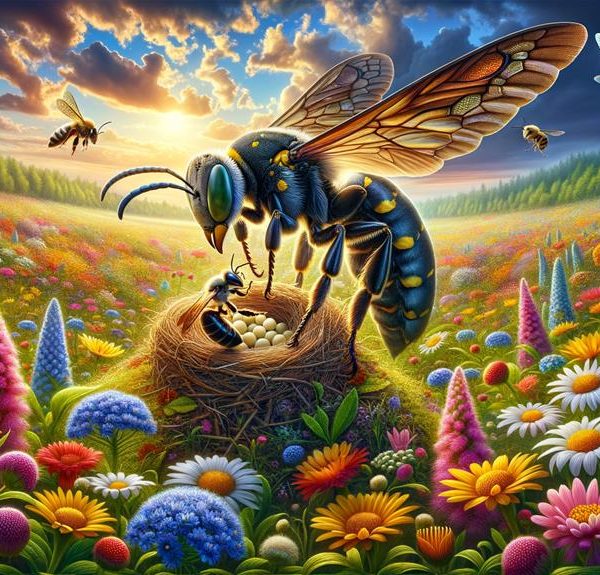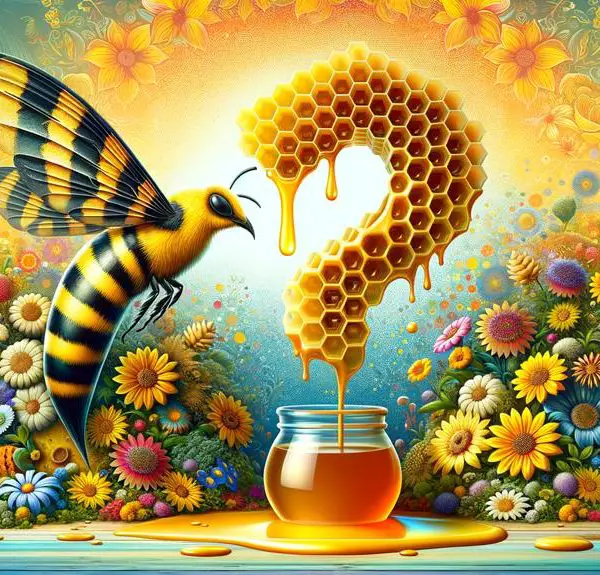Wondering if Neon Cuckoo Bees create honey? Dive into their unique lifestyle and dietary habits to discover the surprising truth.
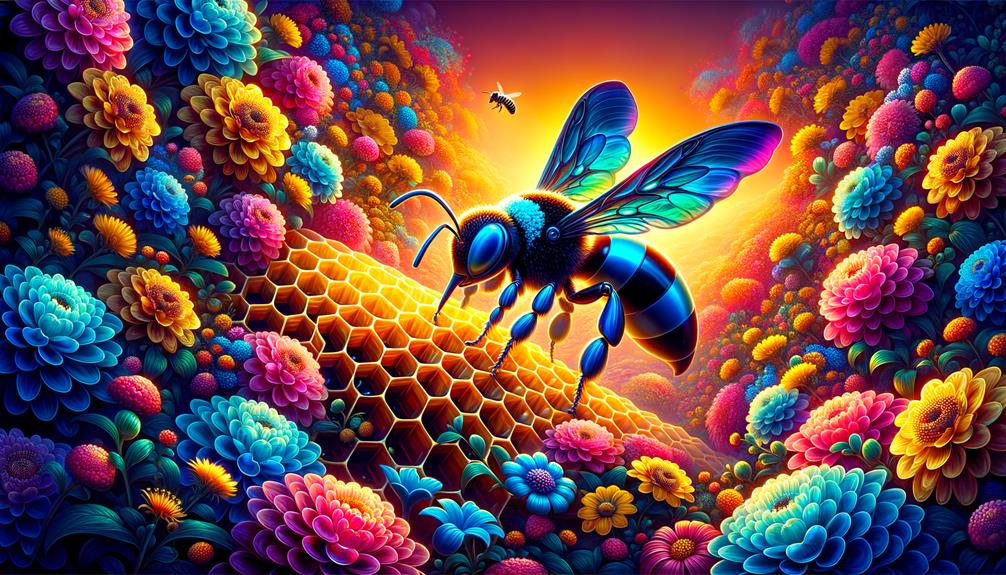
Do Neon Cuckoo Bees Make Honey?
Have you ever wondered if Neon Cuckoo Bees make honey?
They're quite the unique species, with their vibrant, metallic blue bodies and solitary lifestyle.
But when it comes to honey production, things might not be as you'd expect.
Perhaps their unusual habits and dietary preferences play a role here.
Let's explore this intriguing question together and see what secrets these shiny insects might be hiding.
Understanding Neon Cuckoo Bees
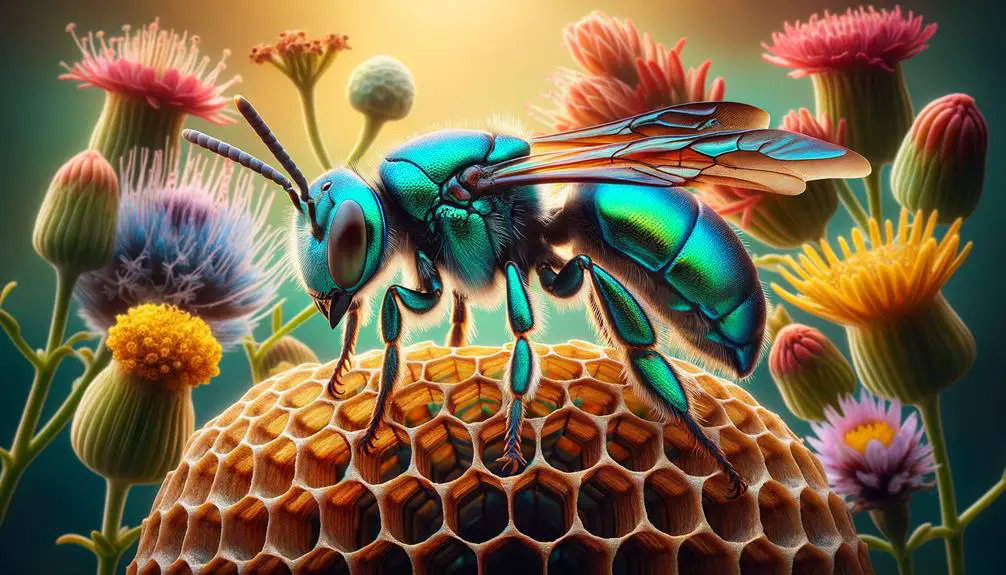
Delving into the world of Neon Cuckoo Bees, you'll discover that these striking insects are unique members of the bee family, known for their vibrant, metallic blue-green bodies and solitary lifestyle. Their Latin name, Thyreus nitidulus, pays homage to their striking neon appearance. Unlike most bees, they don't live in hives or colonies, which sets them apart in the apian world.
Now, you're probably wondering, do these bees make honey? Well, the answer is no. Neon Cuckoo Bees, like other cuckoo bees, are cleptoparasites. This means they don't gather nectar or pollen, nor do they create honeycombs to store honey. Instead, they lay their eggs in the nests of other bee species. The Neon Cuckoo Bee, specifically, targets the Blue-banded bee in Australia.
When the Neon Cuckoo Bee's egg hatches, the larva consumes the host bee's pollen ball, essentially stealing the food meant for the host's offspring. This fascinating, albeit somewhat ruthless, strategy of survival shows us the wide range of behaviors exhibited in the bee world. So while Neon Cuckoo Bees don't contribute to our honey supplies, they certainly add a splash of color and intrigue to our understanding of nature.
Lifestyle and Habitat of Neon Cuckoo Bees
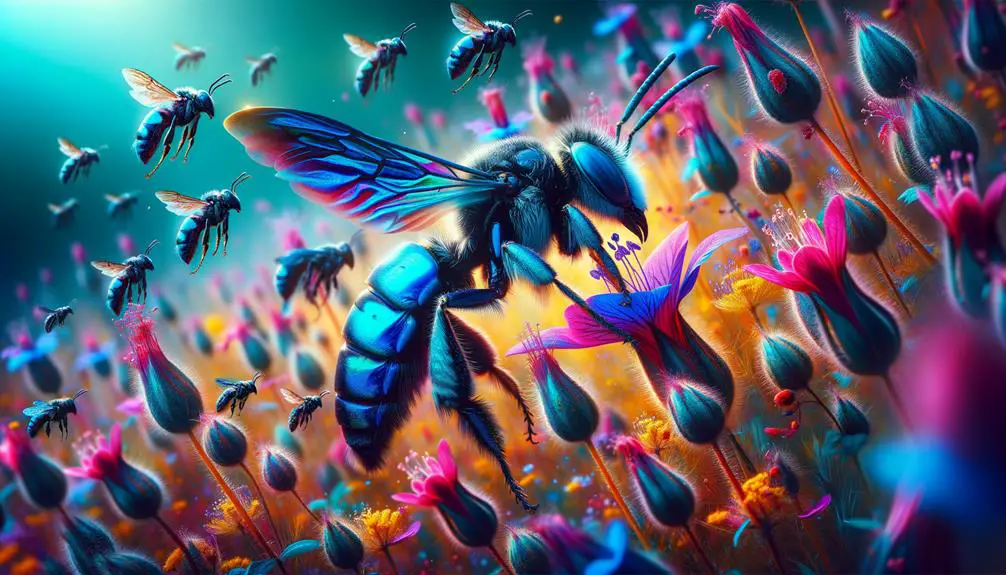
If you're curious about the lifestyle and habitat of Neon Cuckoo Bees, you'd find them leading solitary lives, predominantly inhabiting the wild landscapes of Australia. Unlike their honeybee relatives, these bees aren't social creatures. They live alone, not in hives, and don't form colonies. This solitary lifestyle is a key aspect of their behavior, influenced by their unique biology and the environmental conditions of their habitat.
These intriguing insects are especially common in areas with rich native flora. They're often spotted buzzing around gardens, parks, and forests, making the most of Australia's diverse vegetation. The weather conditions in these regions provide the ideal environment for these bees, with warm temperatures being particularly beneficial for their survival and reproduction.
Neon Cuckoo Bees are cleptoparasites – they lay their eggs in the nests of other bee species. This behavior might seem odd, but it's an adaptive strategy that allows them to save energy and resources, which they'd otherwise spend on nest-building and foraging. Their vivid, metallic blue color serves as an effective camouflage, allowing them to blend in with their surroundings and evade predators. This lifestyle reflects their evolutionary adaptations, optimizing their survival in the harsh Australian outback.
The Diet of Neon Cuckoo Bees
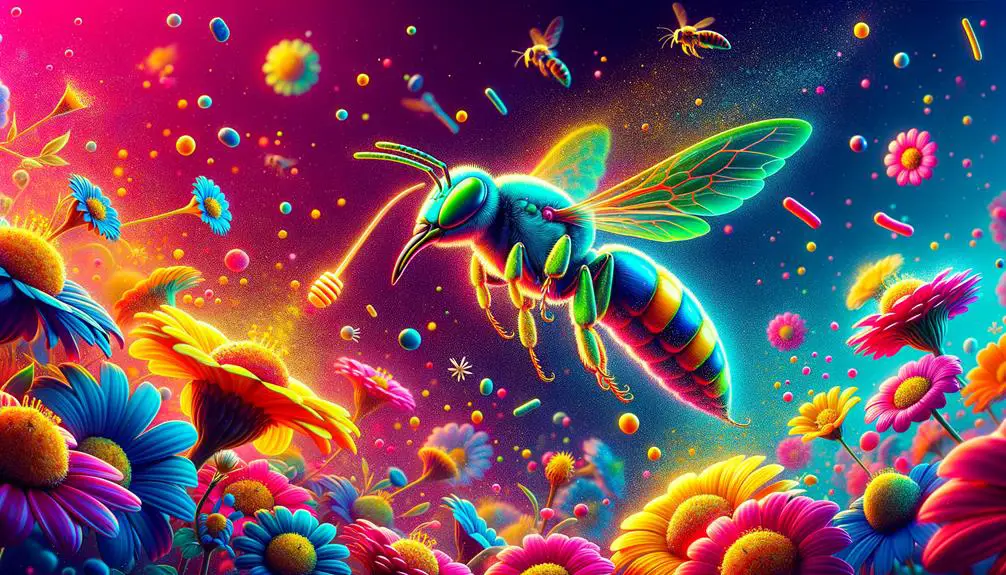
While their lifestyle might seem peculiar, understanding the diet of Neon Cuckoo Bees provides further insight into their unique biological adaptations. Unlike typical honey bees, these vibrant insects don't gather nectar or pollen. Instead, they've a parasitic feeding behavior that's as striking as their neon-blue bodies.
Primarily, their diet consists of:
- The pollen and nectar reserves of other bees
- Larvae of host bees
- Honey reserves of host bees
- Supplements from flowers when food sources are scarce
Neon Cuckoo Bees primarily rely on the hard work of other bees, specifically Blue-banded bees. They lay their eggs in the nests of these bees. Once hatched, the cuckoo bee larvae consume the host's food provisions, including pollen, nectar, and even the host's larvae.
In periods of food scarcity, they've been observed visiting flowers directly. However, this behavior is secondary and not their primary mode of feeding. Their diet, thus, is parasitic, relying heavily on the resources of other bees. This intricate feeding behavior underlines their unique survival strategy, further distinguishing them from standard honey bees.
Role of Neon Cuckoo Bees in Ecosystem
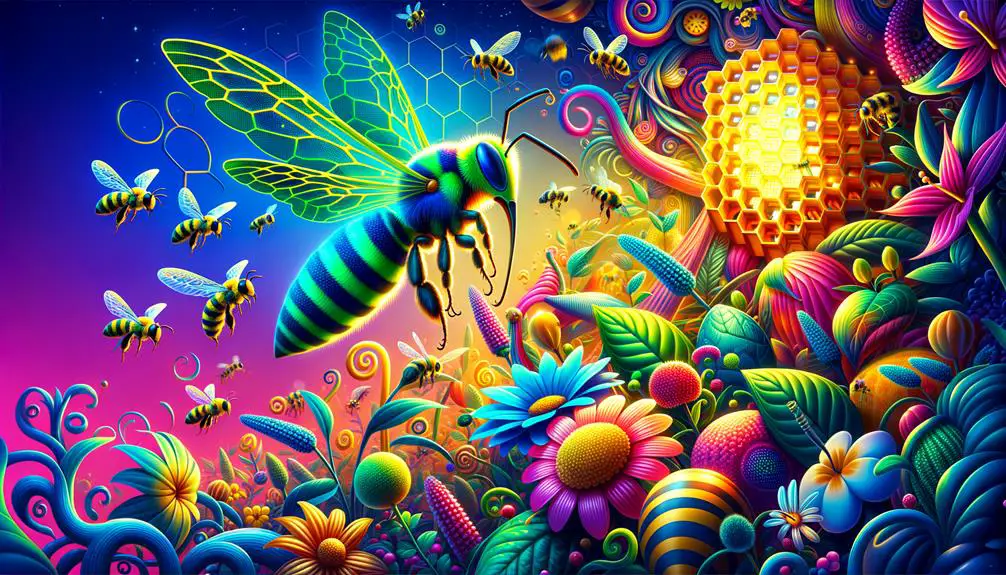
Despite their parasitic lifestyle, Neon Cuckoo Bees play a crucial role in the ecosystem by influencing the behavior and population dynamics of their host bees. By laying their eggs in the nests of other bee species, they instigate a survival-of-the-fittest scenario. The host bees develop defensive strategies to counteract the Neon Cuckoos' parasitism, fostering an environment of coevolution.
In this dynamic, you'll find a balancing act at play. Neon Cuckoo Bees help control the population of their hosts, preventing overpopulation and its consequent strain on resources. Their existence isn't without its benefits to the host species either. The pressure they exert on their hosts can lead to the evolution of more robust species, as these bees must continuously adapt to the threats posed by these intruders.
Moreover, Neon Cuckoo Bees contribute to the biodiversity of their environment. They're part of a complex web of interactions among different species, and their disappearance could disrupt this network, potentially leading to unforeseen consequences. Hence, despite their parasitic nature, Neon Cuckoo Bees are integral to the balance and health of their ecosystems. They're yet another example of the intricacy and interconnectedness of life on Earth.
The Honey Making Process: A Myth?
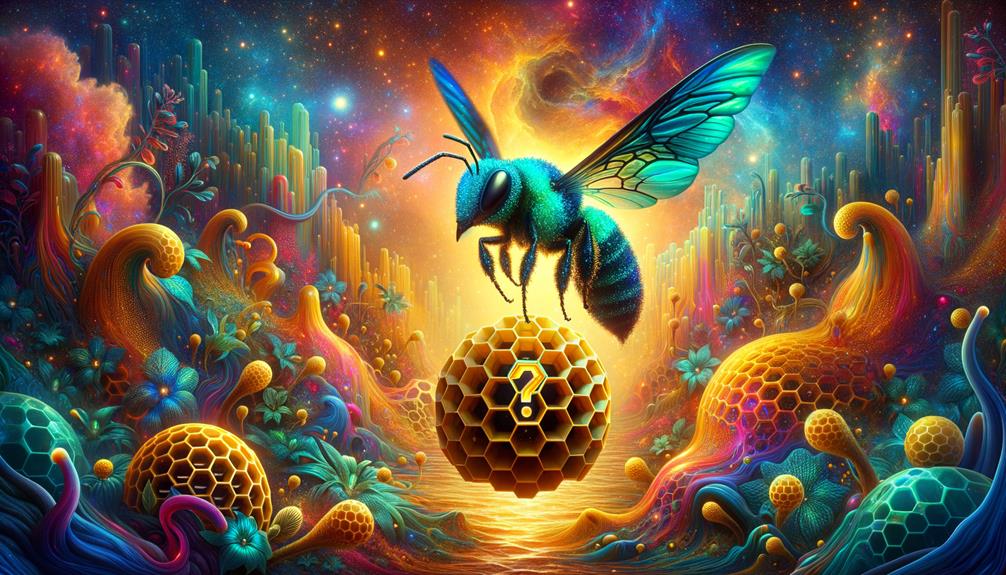
Now, you might be wondering if these peculiar Neon Cuckoo Bees engage in honey production like their host counterparts, or if this is simply a myth. Let's delve into some science to unravel this mystery.
Unlike most bee species, Neon Cuckoo Bees are 'cleptoparasitic.' That's a fancy term for species that lay their eggs in the nests of other bees. But what does this have to do with honey production? Here are some key insights:
- Neon Cuckoo Bees don't build their own nests or gather nectar. They're essentially freeloaders in the bee world.
- Without their own nectar reserves, they don't have the raw materials to produce honey.
- Honey production is a communal effort in a hive. But these solitary bees don't have a community to aid in such endeavors.
- Neon Cuckoo Bees rely on the food stores of their host bees, often blue-banded bees, to feed their larvae.
Conclusion
In conclusion, you might be disappointed to learn that Neon Cuckoo Bees don't make honey. They're solitary creatures, unlike their honey-producing cousins, and their diet consists mainly of nectar and pollen.
However, don't underestimate their role in the ecosystem. These colorful bees are vital pollinators, ensuring the survival and growth of various plant species.
So, while they mightn't sweeten your tea, they're absolutely essential to Mother Nature's grand design.

